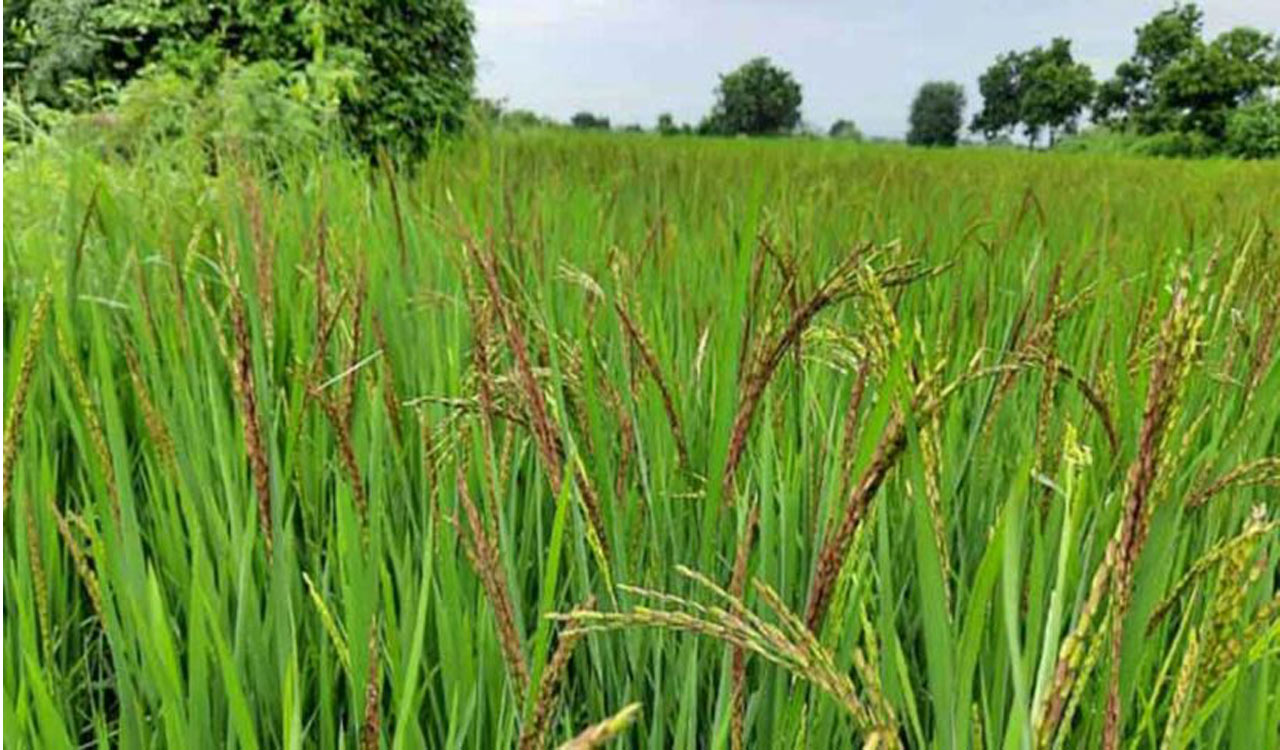The normal area of cultivation of paddy was 3.8 lakh acres under the left canal of NSP, but paddy cultivation was reduced to 75,000 acres this Yasangi crop season.
Published Date – 15 February 2024, 08:11 PM

Representational Image
Nalgonda: The farmers in the ayacut and non-ayacut areas in the district are facing a tough time in taking up cultivation in the district due to low level of water in NSP and the depletion in groundwater levels.
The normal area of cultivation of paddy was 3.8 lakh acres under the left canal of NSP, but paddy cultivation was reduced to 75,000 acres this Yasangi crop season.
Similarly, the normal area of paddy cultivation was one lakh acres in the ayacut of the Alimineti Madhava Reddy Srisailam Left Bank Canal Project (AMRP) canal, but farmers have been able to take up paddy cultivation only in 30,000 acres due to the adverse conditions.
A crop holiday was already declared for the ayacut of NSP left canal for Yasangi crop season for the first time after formation of the State. This was in stark contrast to how irrigation facility was provided In the last nine years to the NSP ayacut for 16 crop seasons by ensuing irrigation facility even to tail end areas.
The water storage level in NSP has reached 517 feet, with the dead storage level being just seven feet away. Officials were expecting that the water would dip to the dead storage level of 510 feet by the end of March. Keeping in mind the situation, the farmers, who have taken up cultivation in this crop season, were planning to go back to the trend of drilling bore-wells to save their crops.
According to the figures from the Groundwater Department, in this crop season, 21 percent deficit rainfall was reported in Nalgonda district, 18 percent deficit rainfall in Suryapet and four percent deficit rainfall in Yadadri-Bhongir district, which has shown an adverse impact on agriculture.
The groundwater level fell down to 8.68 metres in January this year as against 5.27 metres last January, affecting the nearly 25 lakh agricultural borewells in the erstwhile district. In an effort to save their crops, ayacut and non-ayacut farmers were again drilling of new bore-wells.
Over 70 new bore-wells were drilled by the farmers in the tiny village of Koppole in the district this crop season, indicating the severity of the issue. A farmer, Uppunuthala Srinivas of G Chennaram, said he had seven acres of agricultural land and had taken up cultivation of paddy this Yasangi crop season depending on three bore-wells.
As water was not released to D37 of AMRP and the irrigation tanks in the village did not have water, his three bore-wells had dried up. To save his crop, he had drilled four new bore-wells in his agricultural fields spending Rs.30,000 per each one.
Even after drilling down to 400 ft, he got water only from one. All India Kisan Sabha leader M Saidi Reddy said farmers were again drilling borewells for agricultural purposes and it would not be an over exaggeration to say that at least 50 new borewells were drilled by farmers in every village in ayacut areas.
The borewell drillers had also hiked charges due to the increased demand. Earlier, they charged Rs.60 per feet for drilling. This was hiked to Rs.70 per feet now, he added.


